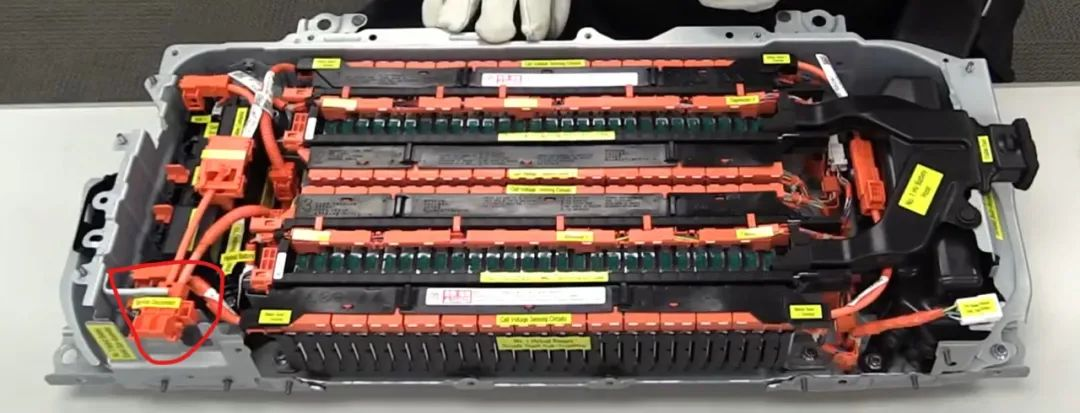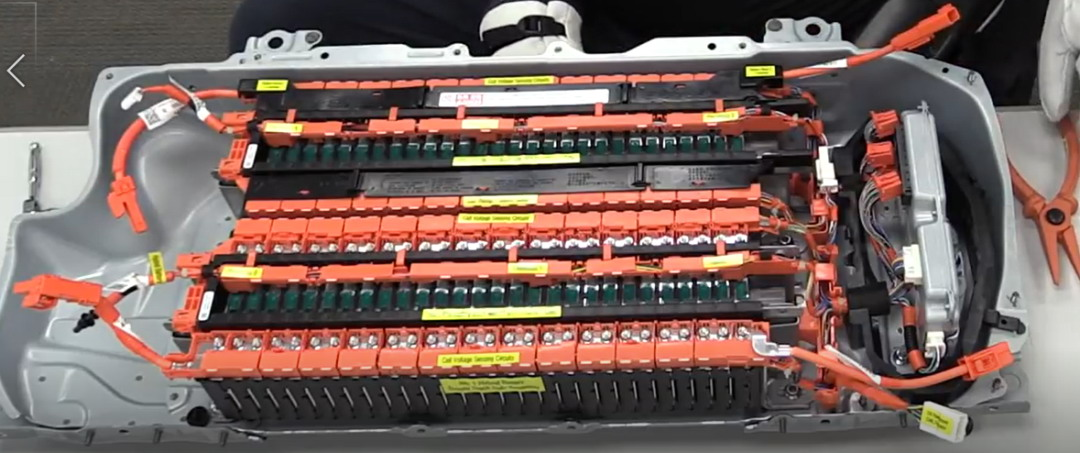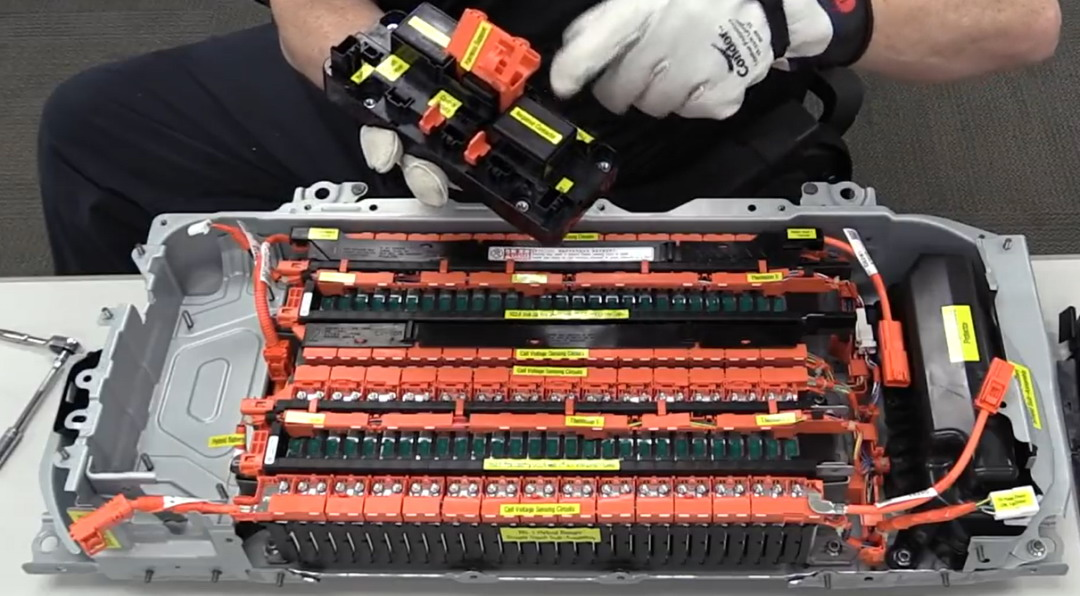Because the energy density, the cycle times and the memory effect of lithium batteries are better than the previous nickel-metal hydride batteries, Toyota replaced the nickel-metal hydride battery pack with a lithium battery pack on the fourth-generation Prius.
Today we borrowed from Prof. John’s dismantling video to give a simple interpretation of the 2017 fourth-generation Prius battery pack.
1)Main Parameters of the Battery Pack
Total energy: 0.75KWh, system nominal voltage: 207.2V.
Cell voltage: 3.7V, cell series-parallel structure: 1P56S, composed of two 1P28S modules connected in series.
2)The Layout of The Pack
Combining the three pictures below, the layout of the entire Pack is divided into four parts:
From left to right are the Air Inlet, Junction Box, Modules and Air Outlet.
Below the air outlet pipe is the BMU.
3)Pack Cooling Method
Cooling method: Passive air cooling.
Both the air inlet pipe and the air outlet pipe are Y-shaped plastic pipes.
The path of air cooling is:
The cold wind enters from the bottom of the left side of the module, then flows upward through the gap between the cells, and finally escapes from the air outlet.
The two air inlets of the air inlet pipe are connected with the bottoms of the two modules.
The two exhaust outlets of the air outlet are connected with the explosion-proof valves above the two module cells.
The blogger noticed: This Pack does not have a dedicated venting channel, so does the above-mentioned air outlet also function as a venting channel? This point is worth exploring.

The red circle in the figure above shows a temperature sensor arranged at the air inlet, similar to the battery pack solution of Ford Fusion.
4)Sealing of Air-cooled Aisles
Combining the two pictures below, it can be seen that the air duct seal at the top of the module and the air duct seal at the bottom of the module are all made of foam bonded to the inside of the upper cover and the bottom of the box.
From the opening direction of the sealing cotton in the second picture below, it can further reflect the direction of the air-cooling path.
5)MSD and Junction Box
MSD is shown in the red circle below. The blogger found that the MSD of most HEV battery packs is placed on the side of the Pack, unlike the MSD of PHEV and EV packs, which are placed above the Pack cover, and should be extremely closely related to the position of the HEV battery Pack in the vehicle.

In the picture below, Prof. John is holding the removed Junction Box in his right hand. It is still a very classic Japanese design and very compact, similar to the Junction Box of Ford Fusion.
6)BMU
After watching the disassembly video, this Pack BMU layout is a bit of a Shock to the blogger. Use the following four pictures to interpret each one in turn.
On the right side of the picture below, what Prof. John got with his left hand is the plastic upper cover of the BMU.
The gray device standing on the right side of the picture below is the BMU, which is different from the traditional horizontal layout.
The BMU is surrounded by a plastic base, and according to Prof.John, the bottom edge of this plastic base is also covered with sealed foam.


This protective design is equivalent to making a small plastic case for the BMU inside the battery Pack to protect the BMU.
The concept of this design, I don’t know if it is due to such considerations: because the BMU is arranged very close to the air outlet, in order to prevent the continuous hot air from affecting the BMU, a plastic shell and base are used to protect the BMU? This point needs further verification.
The above is a simple interpretation of the Gen.4 Prius battery pack with reference to Prof.John’s dismantling video. In fact, looking at the whole pack, there are still many details worth studying and discussing. Due to the limited space, I won’t go into further details here.
So how do we test and regenerate Gen.4 Prius battery pack? Here we recommend the professional lithium battery charge and discharge testing equipment model DT2020 produced by DK Intelligent Equipment Co., Ltd. A single machine has 8 independent channels, which can test and maintain 8 batteries at the same time, one computer can manage multiple devices.

Gen.4 Prius battery pack is composed of two 1P28S modules connected in series. A testing system can be composed of 4 individual machines to perform one-time testing and balanced charging maintenance for 1P28S Modules, accurately find defective cells and timely replace them, so as to achieve the purpose of battery regeneration, restore battery performance.











